False Fire Alarms Cost the UK £1 Billion Every Year
Fire alarms form a vital part of fire prevention and detection strategies, saving lives every day. However, severe mismanagement of fire alarms is having a significant impact on the Fire and Rescue Service (FRS). The FRS attended 576,040 incidents in 2018/19, 40%, the biggest portion, were false alarms. False fire alarms make people complacent about fire safety, prevent firefighters responding to real fires and financial burdens businesses and the FRS. We’re going to review the causes, prevention and fire alarm legislation to be aware of.
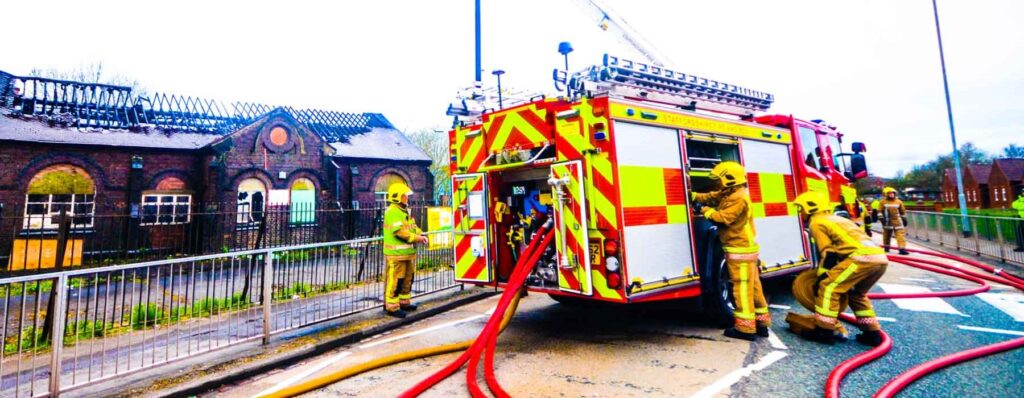
False Alarms Fit into One of Four Categories:
- Unwanted Alarms – A fire like phenomena that a fire detector mistakes for a real fire, like burning toast or dishwasher steam.
- Equipment False Alarms – An alarm generated by a piece of faulty equipment.
- Malicious False Alarms – e.g. someone deliberately breaking a manual call point.
- False Alarms with Good Intent – e.g. someone smelling smoke or sensing a possible fire.
All alarm activations should be recorded in the system logbook.

The Causes and Prevention of False Fire Alarms
Activation of Manual Call Points
Manual call points very rarely cause alarms because they’re faulty, it’s more often due to malicious behaviour. To prevent this, protect call points with approved covers or guards. It may be that the call point should be moved to a more suitable location and reduce risk of vandalism or accidental activation. Installing CCTV can also deter malicious behaviour.
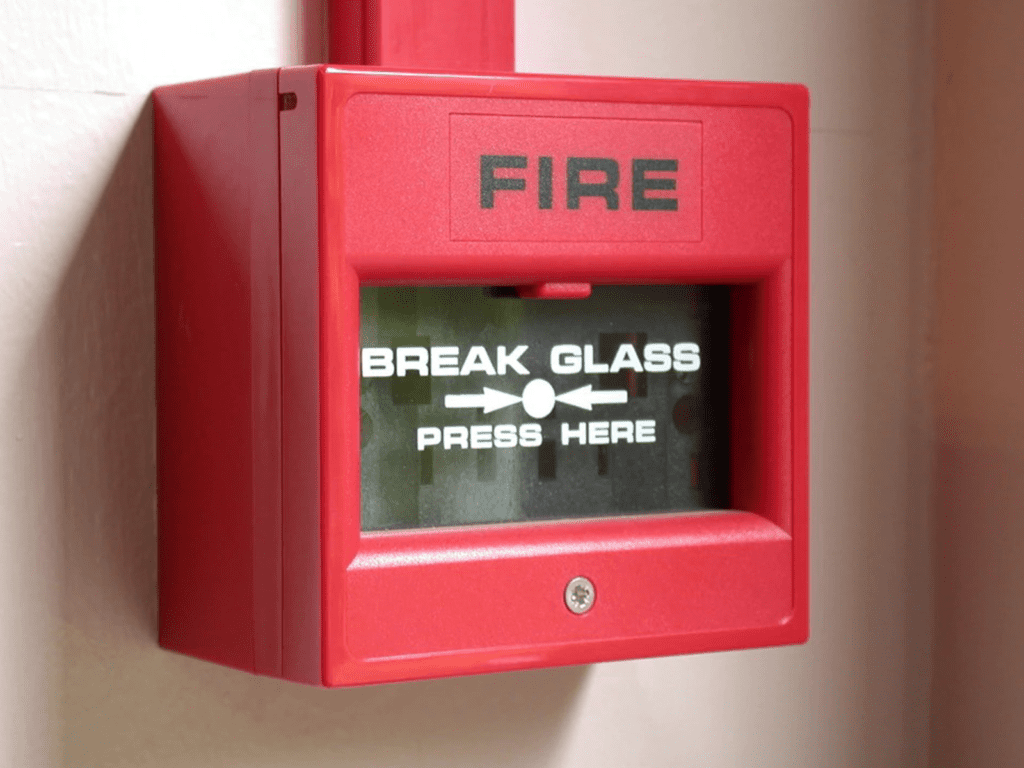
Activation of Smoke Detectors
False activations are commonly caused by airborne pollutants like cooking fumes, steam or dust. Staff must be aware of the detectors and be mindful when working. Consider isolating the affected fire alarm zone for the duration of the work, if the work is likely to result in a false activation.
Cooking Fumes
Only allow cooking in designated locations with appropriate detection, the use of extractor fans and closing doors between designated areas and detector heads will reduce false alarms. Be careful when using your toaster, they are a very common cause of false alarms.
Steam
Adequate ventilation and keeping doors closed will help to avoid excessive build-up of steam. Use a qualified alarm engineer to fit the appropriate detector for the area.
Smoking
Smoking should only be allowed in designated locations protected by appropriate detectors for the risk whilst not susceptible to false activations. Smoking under smoke detectors will set them off!
Aerosol Sprays
Deodorant and hair spray are common causes of false alarms. Where possible, ban aerosols near fire alarm detector heads and use alternative products if it cannot be avoided.
Hot work and Dust Build Up
Dust can reduce the effectiveness of detectors, it’s important to plan carefully for any work to prevent this. Appropriate staff can fit temporary approved covers on detectors to stop false activations, but they should be removed immediately after work has finished. If temporary covers are used, staff should activate a manual call point if they see a fire.
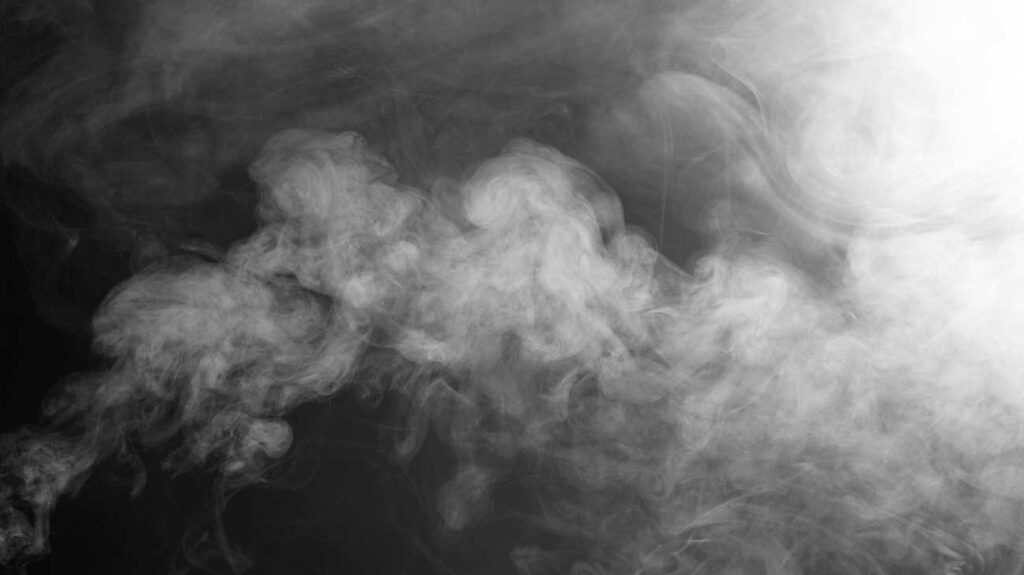
Changes to Use or Layout of the Building
When changes are planned the fire risk assessment should be reviewed to ensure the fire-detection system is still appropriate.
Faulty Detectors
Faults can result in repeated, unexplained alarm activations. A competent person should check the system and rectify the problem.
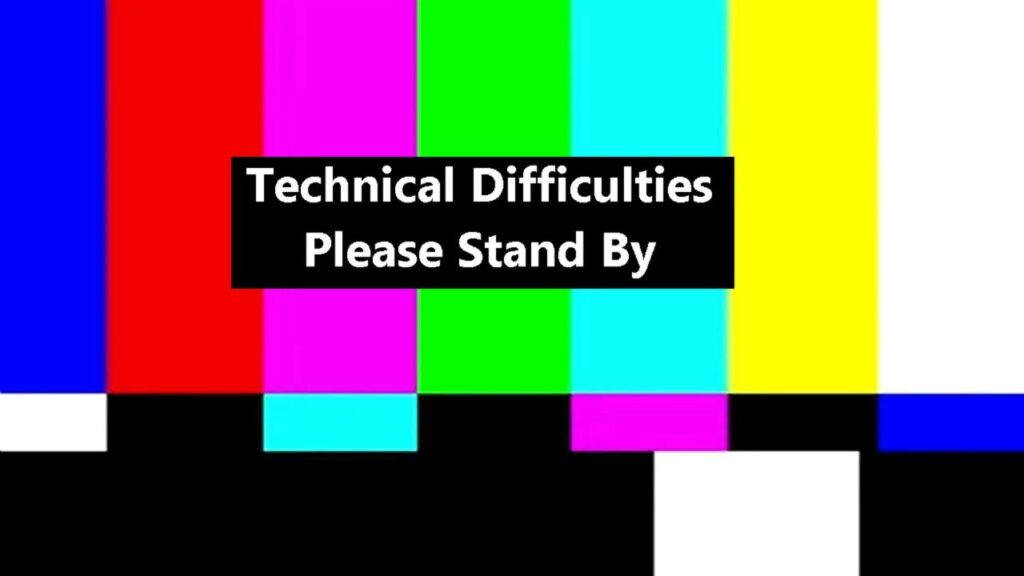
Incorrect Positioning of Detectors
It’s important to have the right detector in the right place, the wrong detector in the wrong place can cause false alarms. For example, if a detector is too close to environmental conditions that may set it off, it should be moved by a competent person.

Maintenance Prevents False Alarms
Fire detection and alarm systems are an important part of your Fire Risk Assessment and will form part of your Emergency Plan. Therefore, it should be maintained by an accredited provider regularly, helping to identify any faults and ensure the system is operating effectively.
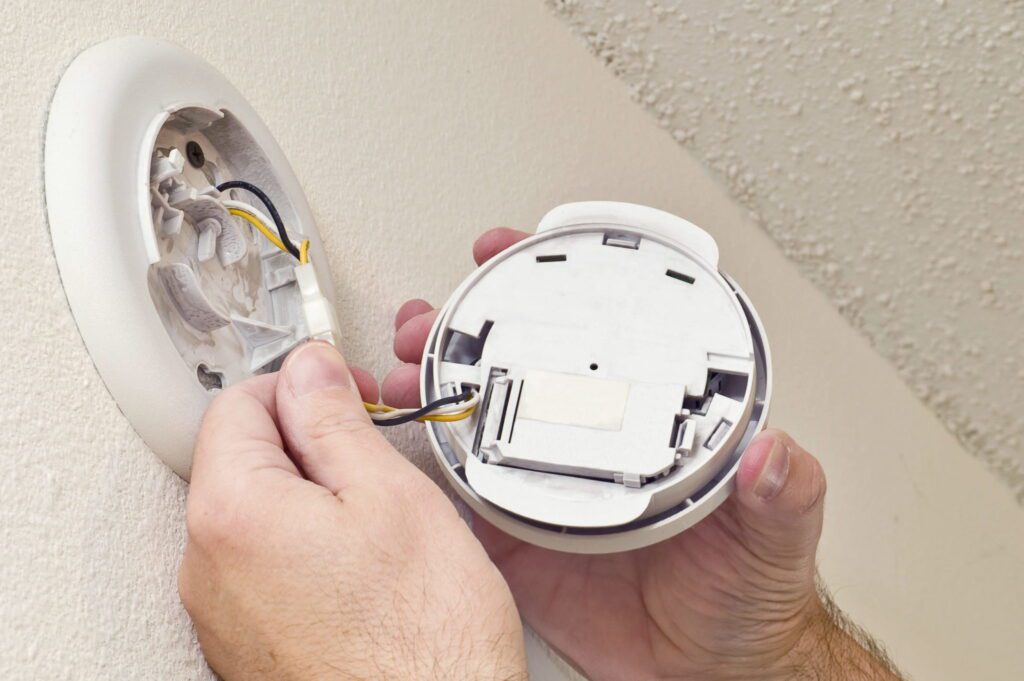
Ageing Systems and Components
Manufacturers generally recommend the replacement of detectors between every 10 to 15 years, check with your accredited service provider for your specific system. Where components are ageing and beginning to fail, false alarms occur. Don’t fall victim to inadequate providers charging you to keep a system running that should have already been replaced.

Training your Team
Staff should be trained in fire drills and according to the needs of the business. They should be aware of the emergency plan, supported by your risk assessment. If a fire alarm system is isolated to prevent false alarms in an area of work, staff should know alternative means of a fire alert.

Fire Alarm Best Practice
- If you manage a property, you are responsible for making sure the fire alarm system is right for your premises and occupancy. Remember not all areas require the same level of protection.
- Use a third party accredited competent person for the design, installation, maintenance and management of your alarm system.
- Maintenance should be a top priority, with a comprehensive structure and liaison with the ‘responsible person’ for resolving any issues to support the fire risk assessment and emergency plan.
- All responsibilities must be clearly defined.
- If you have a false alarm, identify the reason and act to prevent it happening again, your service provider can help.
- Introduce filtering measures to prevent false alarms being unnecessarily passed onto your local FRS.
- Make sure your fire risk assessment and emergency plan are current and fit for purpose, including a call to the emergency services in a real fire.
- Regularly review and refresh the alarm system, procedures and staff training as necessary.
- Be organised and keep appropriate records.

UK Fire Alarm Legislation
Fire alarm regulations form part of The Regulatory Reform (Fire Safety) Order 2005. The UK government recommends all fire alarm and detection systems should be installed and maintained to BS 5839.
The Localism Act 2011 gives the FRS the power to put a charging policy in place to deal with frequent and unwanted fire alarms, as an incentive for businesses to keep their fire alarms better maintained.

Do You Need a Fire Alarm?
All business premises must have an ‘appropriate fire detection system’ so a fire can be easily detected, and occupants warned.
You are unlikely to need a fire alarm system if all these statements are true:
- Your premises are small, simple and single-storey or open-plan.
- You don’t store any high-risk substances.
- You don’t undertake any high-risk activities.
- You don’t have any vulnerable occupants i.e. very young, elderly or disabled.
- A fire would be easily spotted anywhere on the premises.
- A shout of ‘fire!’ would be easily heard by all occupants.
If one or more doesn’t apply, you will probably need a fire alarm system. If in doubt, your fire risk assessment should specifically state whether you should install fire detection. The fire risk assessment must form part of your fire safety plan.

What type of Fire Alarm Do You Need?
Fire alarm legislation doesn’t specify what type of fire alarm system applies where, it’s instead based on each premises’ requirements. An accredited fire safety specialist will be able to identify what’s most appropriate and ensure it meets BS 5839.
There are three main types of automatic fire alarm system:
Conventional
It’s the type most people think of, diving your premises into broad zones and in an alert, the alarm panel identifies the zone but not precise area. It’s most suitable for smaller, low-risk environments.
Addressable
Each individual fire detection device has its own electronic address, if an activation occurs the alarm panel will precisely identify where the problem is. It works well in larger, high-risk environments like schools and hospitals.
Wireless
It works like the addressable system but wireless, instead using a secure link between sensors and a fire alarm panel. It’s best for premises where a lot of cabling isn’t appropriate, such as historic buildings.

What about Fire Alarm ‘Grades’ and ‘Categories’?
There is a system that defines how fire alarm systems should be constructed (Grades) and which area it should cover (Categories). A reputable, accredited expert can help install a system that’s for your property.
Grades
Fire alarm grades run from ‘A’, the highest, through to ‘F’, the lowest. Residential buildings can often meet regulations with a lower-grade system (D-F), they’re not wired to a central control panel and may not have back-up power. Businesses need more substantial systems for compliance (A-C).
Categories
There are two main categories:
Category ‘P’ systems – Protect property
Category ‘L’ systems – Protect life
The grade and category of fire alarm system should be specified in your fire risk assessment.
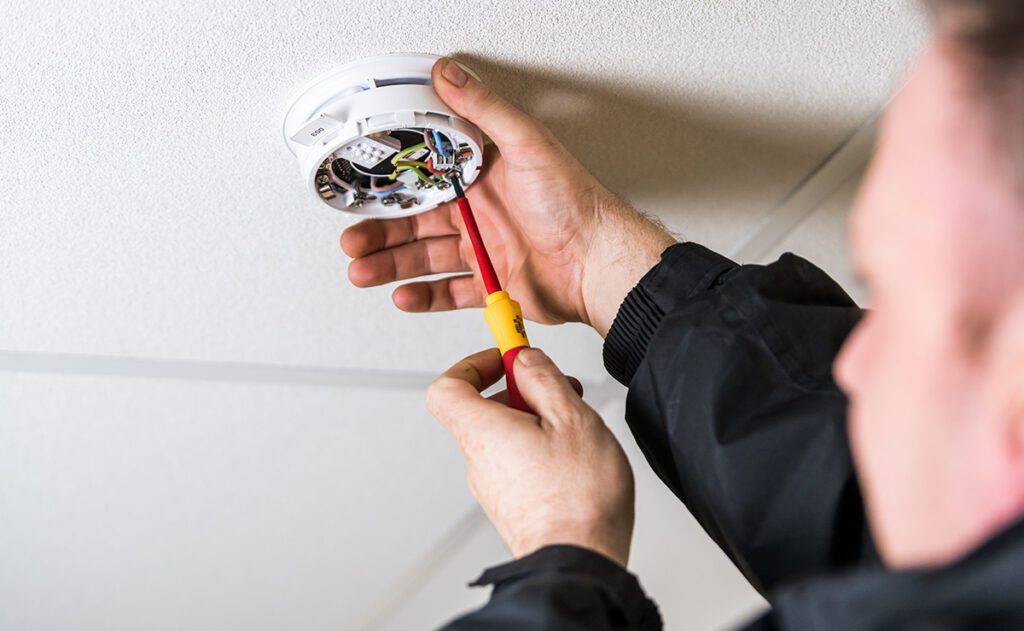
Who can Install a Fire Alarm?
A fire alarm installer must be competent, this means they should:
- Understand types of fire alarm system and how they work.
- Be familiar with makes and model of fire alarms.
- Be able to identify which grade and category system you need.
- Be able to design a fire alarm system to meet grade and category requirements.
- Have a good understanding of BS 5839
- Be able to design a system to meet BS 5839
- Have sound electrical knowledge.
Choose an installer that is third party accredited by a professional certification body, validated by UKAS (the United Kingdom Accreditation Service). This assures the alarm design will suit the premises, activities and meet the necessary British Standards.
Another recognition of quality is a professional membership from a trade organisation like the BSIA, FIA or FPA.
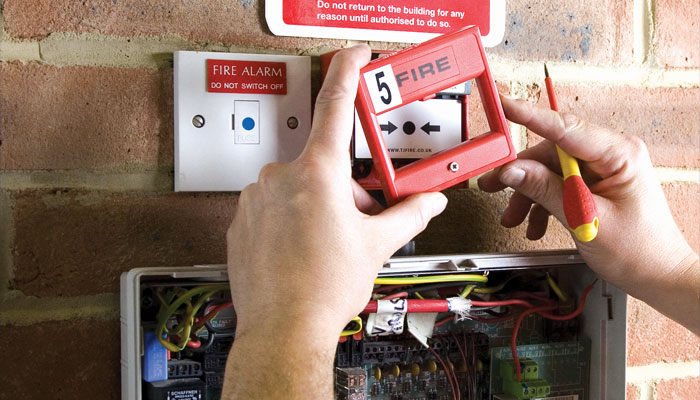
How Often Should a Fire Alarm Be Serviced?
BS 5839 recommends a fire alarm system should be inspected by a competent person at least every 6 months. If it’s a large premise, a quarterly service is recommended as the more fire alarm systems, the more opportunities there are for something to go wrong.
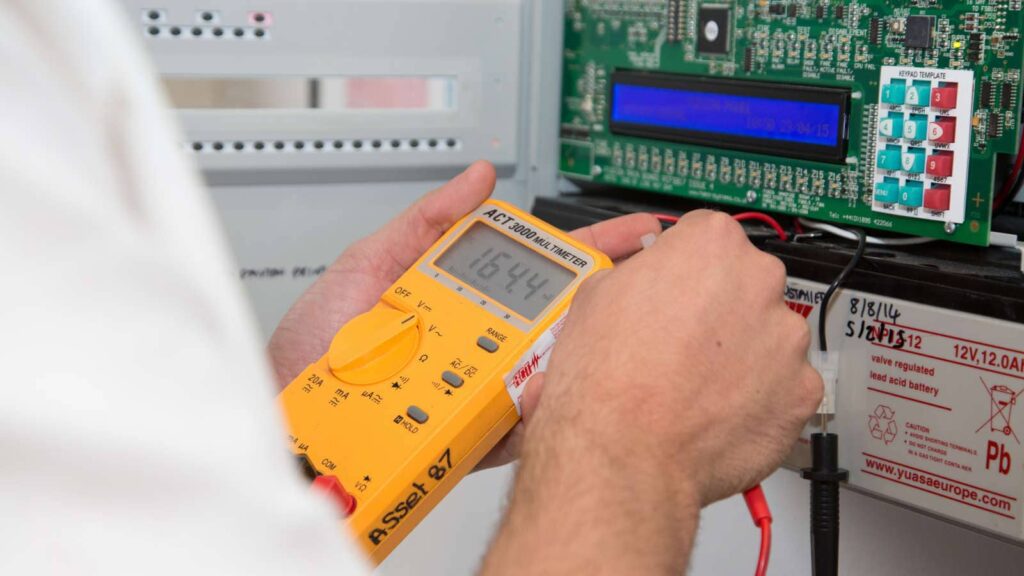
What is Weekly Fire Alarm Testing, and Do You Have to Do It?
Both fire alarm servicing and weekly testing are required, servicing is a thorough investigation of the whole alarm system, whereas weekly testing is more of a spot check. Its purpose is to quickly test your system is working well and identify any issues.
The guidance to test weekly comes from BS 5839, having a fully operational fire alarm is a regulatory requirement for premises that need them. If you test less frequently, you will have to justify why you’ve deviated from BS 5389 to fire officers.
Your ‘responsible person’ or a fire alarm company can carry out weekly testing. It should involve activating at least one manual call point, checking the alarm sounds and the panel receives the signal. Don’t test the same call point every week.
Once you’ve performed a successful check, you can re-set your fire alarm panel. If you encounter a problem, you should contact your fire safety company.
Record the test in your log book, including the location of any and all call points tested.
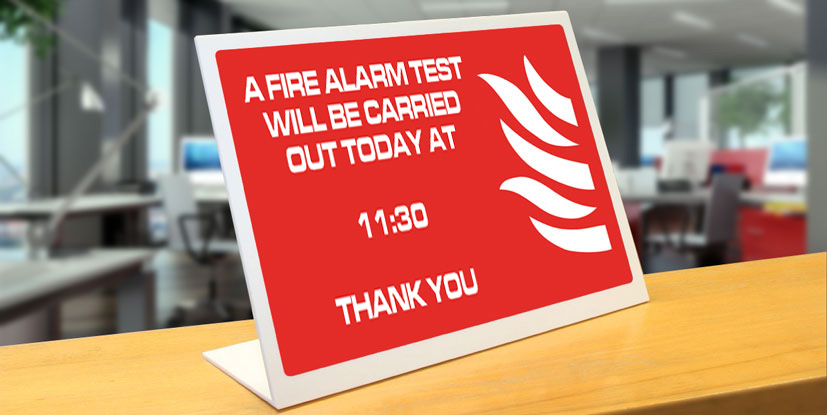
What if Something Goes Wrong?
If, for example:
- An alarm is sounding but there’s no fire.
- A light on your fire alarm panel says there is a fault.
- Your fire alarm panel keeps beeping.
- There’s no power going to your fire alarm panel.
You must report any issue immediately to your fire protection company. Your system will be regarded as non-compliant with fire alarm regulations if there’s a fault. Your fire alarm company should attend the site within 24 hours. For major faults, where the fire alarm is disabled, they should attend in four hours.
About Cannon Fire Protection
With over 30 years of experience, Cannon Fire Protection has developed an excellent reputation within the fire protection industry throughout the United Kingdom and Europe. Independent auditing of our quality management systems, contracting and service operations ensures the very best provision of support in our sector.

Request A Quote
Have a project or portfolio that you would like to work with us on? Get in touch and a member of our team will be in touch very shortly..
Our two head offices are based in Birmingham and Ollerton with fully qualified, experienced engineers spread throughout the UK allowing Cannon Fire to operate nationwide.
Call Us: 01623 860685
Email Us: [email protected]
CONTACT DETAILS
Trading Offices
Unit 1 Sherwood Network Centre, Ollerton, NG22 9FD
Unit C, 37a Parkfield Road, Coleshill,
Birmingham, B46 3LD
OUR KEY SERVICES
Copyright © Cannon 2024 All rights Reserved